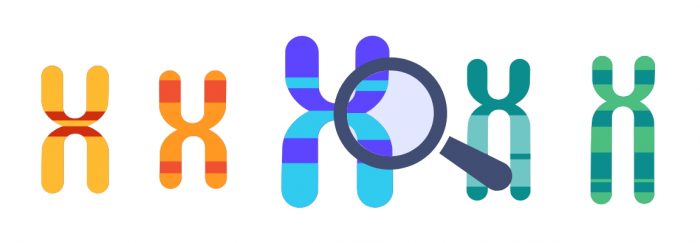At tellmeGen, we strive to turn something complex like genetics into something simple to understand and interpret.
Yes, we know that for some, genetics is not complicated; we have a department full of such people, but we consider them the exception rather than the norm.
That’s why we’ve added a small tutorial in each section of your results to help understand what we’re showing. We’ve even included images because we firmly believe that just putting a bunch of text is, aesthetically, boring.
That’s why we also add drawings to the blog. They are bait for you to read us.
The tutorial is located within each block, at the top, just above the text that defines the content of the block itself. It’s in blue letters with beautiful calligraphy; clicking on it will open it so you can view it.
Genetic vulnerability to health conditions
In this section, we explain the genetic risk of developing complex diseases. We’re all unique, a statement that includes our genome.
The problem is that sometimes we have mutations that make us unique, but also increase the risk of suffering from certain complex diseases (which depend on genetic and environmental factors).
By analyzing your DNA, we can calculate your genetic risk for these pathologies. However, they are complex. We can only take into account the information in your genes. Environmental conditions can have as much or more weight in these pathologies, and we can’t account for them.
Having a low genetic risk of developing lung cancer is useless if you smoke a pack of cigarettes every day and live next to a highway with heavy traffic of cars that are 20 years old.
You’ll see that in this section we express the data through a Gaussian curve, as they are predispositions, but not certainties.
These pathologies depend on your genetics. To be specific, they depend on one gene. The results will tell you if you are a carrier of pathogenic variants associated with different hereditary diseases.
These diseases, depending entirely on the individual’s genetics, are passed from parents to children. That’s why they are called hereditary.
We have our DNA duplicated, one copy from our father and one from our mother. Dominant diseases are expressed by having a single pathogenic copy. Recessive diseases require both copies to be of the disease.
A person who has, in a recessive disease, a pathogenic copy and a normal one is called a carrier. And yes, a carrier can still pass the dangerous copy to their children without knowing it in many cases, since they have not shown symptoms or they were imperceptible.
Genes like to influence everything that happens in your life, and your response to medications is no exception.
Drugs work differently in people (intensity of effects, duration, adverse reactions…) and the individual’s genetics has a lot to do with it.
By analyzing your genome, we can predict how your body will respond to a range of medications. The list goes from antidepressants to aspirin.
Think that, after all, drugs are active compounds that interact with your body. And everybody is coded in the genes.

Not everything we’re going to tell you has to be about diseases. We like to see the little curiosities that define us.
In this section, through the genes, we tell you which physical traits came from your parents to you.
These physical traits are very varied and can depend on a few genes or dozens of them. As with complex diseases, they are characteristics that in most circumstances depend on environmental factors.
We predict what your genome tells us is there, but it’s not a certainty, and the environment around you can modify them. Sometimes, even other genes that we do not analyze can modify the trait (epistasis).
Similar to the previous section, but focused on physical well-being. Imagine the same, but less curious data and more about how your body behaves with certain foods or in situations of physical effort.
Although again, the environment in which you live and your lifestyle has a huge influence on this section.
This section is divided into four sub-sections.
An ancestry section proper, to know which populations your DNA resembles the most. In the tutorial, we explain briefly the process we follow for this.
We have two haplogroup sections, the maternal and the paternal. The maternal tells you the history of your ancestors on your mother’s side thanks to mitochondrial DNA. The paternal does the same with your ancestors on your father’s side, but based on the Y chromosome. Again, the tutorial will explain more about these sections.
Finally, we have a Neanderthal DNA section. It will tell you what percentage of your DNA is Neanderthal. But in the tutorial, it’s explained even better than here, especially because they add more drawings.
If you don’t have an account but still want to see it, you can also access the tutorial in our demo.
And if you don’t have an account, but you want to have one, here you can purchase our tellmeGen DNA test.



